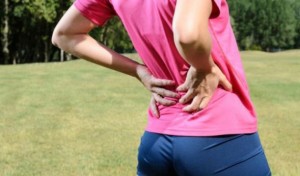 According to the Canadian Physiotherapy Association, four out of five Canadians experience at least one episode of low back pain at some point in their life.
According to the Canadian Physiotherapy Association, four out of five Canadians experience at least one episode of low back pain at some point in their life.
Physiotherapists focus on exercise, mechanics and posture, through customized treatments that work to increase your flexibility, strength, and endurance. Physiotherapists are effective in helping to reduce acute and chronic pain. There are three main types of back pain.
Localized pain is felt in the lower back and is restricted to a particular area on the body.
Radiating pain occurs when there is pain in the back and pain down the leg or foot, and is a sign that the nerve or nerve root is under pressure from either an injury or inflammation.
Referred pain is felt not only at the injured site, but also on different body areas, which is due to the fact that nerve signals from several areas of the body share the same nerve pathway leading to the spinal cord and brain.
Physiotherapists are skilled in manual therapy using precise hands-on techniques to relieve stiffness and improve movement of the joints and muscles. They incorporate movement exercises (Active physical therapy)that help restore motion and decrease radiating or referred pain; as well as progressive strengthening exercises that focus on increasing muscle strength, and function, while helping to increase core stability and endurance.
The physiotherapist may also use Passive physical therapy (modalities) including heat, ultrasound, eToims, Shockwave therapy, spinal decompression, class IV K-Laser therapy and trigger point dry needling, also referred to as intramuscular stimulation (IMS).
Health Link BC offers some helpful information on the different types of exercises you should try, depending on your symptoms:
Exercises to try if your back pain is eased by standing or lying down:
Alternate arm and leg / Backward bend / Hip flexor stretch / Press-up / Relax and rest
Exercises to try if your back pain is eased by sitting down:
Double knee-to-chest / Piriformis stretch / Single knee-to-chest
Exercises to try when no position eases your back pain:
Cat-camel / Curl-ups /Front plank /Hamstring stretch / Pelvic tilt / Walking
As with any medical advise, please contact your health care practitioner before starting any treatment or exercise regime.


 Trigger point dry needling, also referred to as intramuscular stimulation (IMS) and/or intramuscular therapy (IMT) is an invasive procedure in which an acupuncture needle is inserted into the skin and muscle.
Trigger point dry needling, also referred to as intramuscular stimulation (IMS) and/or intramuscular therapy (IMT) is an invasive procedure in which an acupuncture needle is inserted into the skin and muscle. 